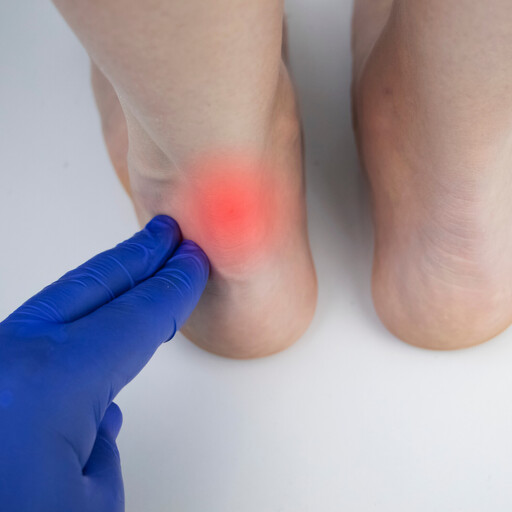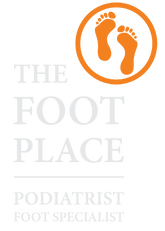Achilles Tendonitis
The Achilles tendon connects the calf muscles in the lower leg to the heel bone. It is the largest yet most exposed tendon in the body.
Achilles Tendonitis is where the Achilles tendon, and sometimes the protective sheath through which it moves, becomes inflamed, causing pain and swelling symptoms.
Achilles tendonitis is an overuse injury. If left untreated it can become chronic (long-term), requiring more intensive treatment. Achilles tendonitis can also increase the risk of sustaining an Achilles tendon rupture (tear).
Signs & Symptoms
The onset of the symptoms of Achilles tendonitis tends to be gradual, with symptoms usually developing over a period of several days, or even weeks. Symptoms may include:
Pain - this may be mild at first and may only be noticeable after exercise. Over time the pain may become constant and severe
Stiffness - this is usually relieved by activity
Sluggishness in the leg
Tenderness - particularly in the morning and most commonly felt just above where the tendon attaches to the heel bone
Swelling
Causes
The Achilles tendon is a strong band of connective tissue that attaches the calf muscle to the heel bone. When the muscle contracts, the tendon transmits the power of this contraction to the heel, producing movement. The Achilles tendon moves through a protective sheath and is made up of thousands of tiny fibers.
It is thought that Achilles tendonitis develops when overuse of the tendon causes the tiny fibers that make up the tendon to tear. This causes inflammation, pain and swelling. As the tendon swells it can begin to rub against the sheath surrounding it, irritating the sheath and causing it too to become inflamed and swollen.
It has a poor blood supply, which can make it susceptible to injury and can make recovery from injury slow.
Factors that can lead to the development of Achilles tendonitis include:
Tight or weak calf muscles
Rapidly increasing the amount or intensity of exercise
Hill climbing or stair climbing exercises
Changes in footwear - particularly changing from wearing high-heeled shoes to wearing flat shoes
Wearing inadequate or inappropriate shoes for the sporting activity being undertaken
Not adequately warming up and stretching prior to exercise
A sudden sharp movement causes the calf muscles to contract and the stress on the Achilles tendon to be increased. This can cause the tendon fibers to tear.
Diagnosis
If Achilles Tendonitis is suspected, avoid any exercise or activity that causes the pain. It is advisable to contact us promptly so that an accurate diagnosis can be made and appropriate treatment recommended.
Our specialist podiatrist, Stefan, will take a full medical history and will ask about the nature and duration of the symptoms. He will perform a physical examination of the affected area. Ultrasound scanning may be used to assess damage to the tendon or surrounding structures. Occasionally MRI (Magnetic Resonance Imaging) may be recommended.
The symptoms of Achilles tendonitis are often similar to symptoms of other conditions such as partial Achilles tendon rupture and heel bursitis. This can make diagnosis difficult however consultation with our specialist podiatrist can help.
Treatment
Treatment will depend on the severity of the injury. In general terms, the longer the symptoms are present before treatment begins, the longer the timeframe until complete recovery is achieved. Complete recovery can take between three and nine months.
Initial treatment of Achilles tendonitis may include:
Rest - to avoid further injury to the area
Ice - to reduce inflammation
Elevation - to reduce swelling
The temporary use of a heel lift can offer relief, however it is not recommended for long-term use as it will cause the calf muscles to tighten, increasing the risk of further Achilles tendon and calf injury.
Bandaging/strapping - to support the area and restrict movement of the tendon
Anti-inflammatory medications to reduce pain and inflammation. Cortisone (steroid) injections to reduce inflammation are not usually recommended as they may weaken the tendon and increase the risk of rupture . Do not use anti-inflammatory medication until you have consulted our podiatrist or your GP.
Podiatric prescription orthotics, exercises and splints
The use of prescription orthotics, including biomechanical analysis and casting for and fitting of orthotic devices to support the foot and reduce stress on the tendon, may be recommended.
Recommendations of specific, targeted calf stretching exercises can help gently increase the flexibility of the calf muscles and in doing so, reduce the tension, inflammation and pain at the Achilles tendon.
The use of night splints can also be recommended. They can provide a gentle, controlled and effective stretch of the calf muscles, reducing the tension, inflammation and pain at the Achilles tendon.
Extracorporeal Shockwave Therapy (ESWT)
ESWT is an intervention that stimulates the body's natural healing process. Additionally, SWT has been shown to have a direct effect on local nerve endings, resulting in a decrease in pain. Shockwaves stimulate fibroblasts which are cells responsible for the healing of connective tissue such as tendons.
Diminishes pain by two mechanisms:
Hyper-stimulation anaesthesia - local nerve endings are overwhelmed with so many stimuli that their activity diminishes, resulting in a short-term reduction in pain.
Gate-control mechanism - whereby local nerves are stimulated to recalibrate perception of pain and result in a longer-term reduction in pain.
For further information about this treatment, please refer to "Extracorporeal Shock Wave Therapy (ESWT).
Casting/Splinting
For cases of Achilles tendonitis that do not respond to initial treatment, casting or splinting of the affected foot may be recommended to allow it to rest completely.
Nutrition
While this is often overlooked, balanced healthy nutrition is vital. We are what we eat. A balanced healthy diet will give your body the building blocks, the necessary nutrition to enable cellular repair. Professional advice from a nutritionist is recommended. Avoiding processed foots, sugar and alcohol will all assist your healing process.
Sleep
Try to ensure you get a good nights sleep. Sleep enables your body to undertake cellular repair. A regular, good nights sleep routine will also assist your healing process.
Rehabilitation activities:
Any exercise aimed at improving your general flexibility is also highly recommended. This includes, but is not limited to:
Pilates
Yoga
Tai chi
Regular deep tissue/sports massage
Acupuncture
Regular osteopathic treatment
Regular chiropractic treatment
regular physiotherapy
The aim is to develop strong, flexible muscles at both the calf muscles and the muscles at the front of your leg. Balance and flexibility is the key. If you enjoy the gym, using the rowing machine will be helpful.
Prevention
The following measures can significantly reduce the risk of developing Achilles tendonitis:
Adequately and carefully warm up and stretch your calf muscles prior to exercise.
Warm down and stretch after exercise
Choose footwear carefully. Where possible, avoid high heels as they help to tighten the calf muscles.
Use footwear appropriate to the sport being undertaken.
If you enjoy cycling, always use toe clips. This allows you to both push (calf contraction) and pull (calf relaxation) during the cycle rotation, helping to avoid an abnormal tightness and muscular bulk and power imbalance between the calf muscles and the muscles at the front of your leg.
Use orthotic devices in footwear to correctly support the foot
Exercise within fitness levels and follow a sensible exercise programme
Any exercise aimed at improving your general flexibility is also highly recommended. This includes but is not limited to:
Pilates
Yoga
Tai chi
Regular deep tissue/sports massage
Acupuncture
Regular osteopathic treatment
Regular chiropractic treatment
Regular physiotherapy
Try to develop strong, flexible muscles at both the calf muscles and the muscles at the front of your leg. Balance and flexibility is the key. If you enjoy the gym, using the rowing machine will help.
While this is often overlooked, a balance healthy nutrition is vital. We are what we eat. A balance healthy diet will give your body the building blocks, the necessary nutrition to enable cellular repair. Professional advice from a nutritionist is recommended. Avoiding processed foods, sugar and alcohol will all assist your healing process.
Try to ensure you get a good nights sleep. Sleep enables your body to undertake cellular repair. A regular good nights sleep routine will also assist your healing process.

